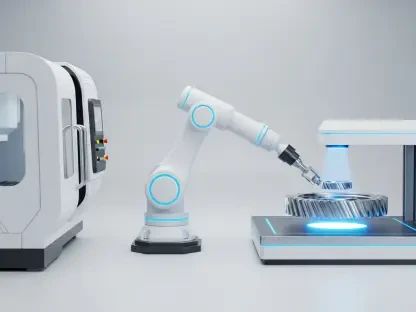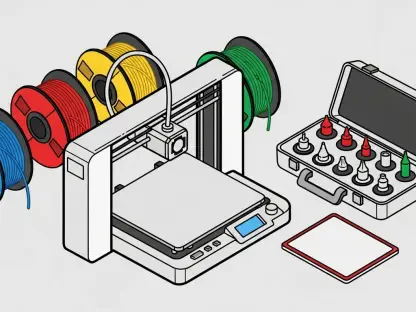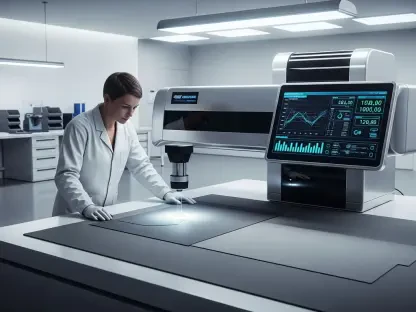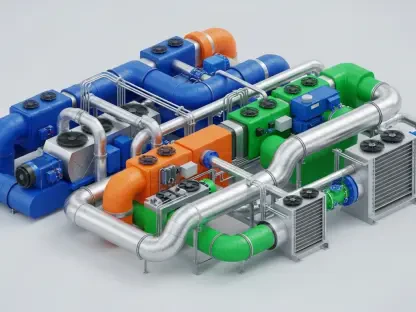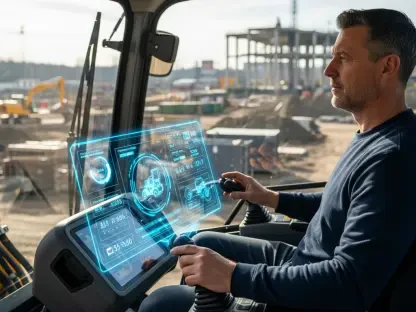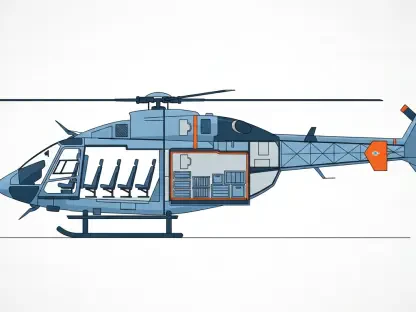In the world of industrial maintenance, where downtime spells disaster, a new solution is reshaping the narrative: AI-driven predictive maintenance. Traditionally, maintenance revolved around either the reactive “fix it when it’s broken” approach or preventive strategies that often squandered resources addressing nonexistent problems. As industries evolve, becoming more digital and data-rich, these methods fall short in meeting the operational demands of modern factories and production units. This necessity has ushered in a wave of innovation, particularly through AI technologies, to foresee equipment failures before they occur and prescribe the best corrective measures.
Delving into Predictive Maintenance Technology
The backbone of AI-driven predictive maintenance lies in machine learning and advanced AI algorithms. These tools are capable of sifting through vast amounts of data gleaned from sensors attached to the machinery. Through robust data processing techniques and pattern recognition capabilities, they predict equipment failures with remarkable accuracy. This predictive prowess not only extends the lifespan of machinery by preempting breakdowns but also allows for maintenance to be scheduled at the most opportune moments, thereby reducing costs and enhancing operational efficiency.
Sensor integration is another critical pillar. Various sensors—such as those measuring temperature, vibration, and acoustics—relentlessly monitor machines, generating a constant stream of data. This wealth of information feeds the AI models, enhancing their predictive accuracy. Rich, real-time data enables more accurate predictions about potential failures, ensuring maintenance is precisely executed, optimizing schedules, and resource allocation.
Fresh Developments and Trends on the Horizon
Recent advancements in AI, particularly in areas such as deep learning and edge computing, are accelerating the capabilities of predictive maintenance systems. These technologies are paving the way for more decentralized and rapid data processing, thereby enhancing the real-time efficacy of maintenance operations. Industries are increasingly warming to AI methodologies, abandoning outdated models in favor of data-led and predictive strategies, not least because they enhance reliability and cut down costs substantially.
The shift toward integrating AI in maintenance is also being bolstered by industrial IoT (Internet of Things) advancements. The proliferation of IoT devices across various sectors opens up new possibilities for data collection and utilization, leading to more intelligent and efficient maintenance strategies. This technological convergence is leading industries to adopt AI-driven maintenance systems at an unprecedented pace.
Real-World Implementations and Success Stories
In industries such as manufacturing, aviation, and the automotive sector, predictive maintenance is no longer a visionary concept but a practical tool. Factories employing AI-driven maintenance report significant reductions in equipment downtime and maintenance costs. Automotive giants use predictive analytics to optimize supply chain operations, while aircraft maintenance gains precision, increasing fleet availability and safety. These implementations not only mitigate risks but also demonstrate tangible benefits, making a substantial case for AI’s role in maintenance strategies.
Case studies reveal success stories, such as manufacturers who drastically reduced production line interruptions by incorporating predictive algorithms into their operations. These transformations clearly showcase the technology’s potential in providing competitive advantage through innovation and strategic foresight.
Navigating the Challenges of Implementation
Despite its promises, deploying AI-driven predictive maintenance involves addressing several hurdles. Technical challenges include integrating disparate legacy systems, ensuring smooth data flow, and maintaining high-quality data for AI models. Another critical concern is workforce readiness; moving from traditional methods to AI-driven systems requires employee reskilling and gaining organizational buy-in.
Regulatory landscapes also present challenges, particularly where data privacy and security are concerned. Organizations must navigate these nuances to ensure compliance while harnessing the full potential of AI in their maintenance strategies. Thus, careful planning and a phased approach to implementation are necessary to overcome these barriers.
Future Prospects and Innovations
The future holds significant promise for AI-driven maintenance, characterized by continuous learning AI models that adapt to operating conditions. Innovations in machine learning and AI could offer even clearer insights and forecasting capabilities, further transforming maintenance from a preventative to a prescriptive nature, aligning closely with strategic business objectives.
Expected advancements may allow industries not only to predict when failures might occur but also to recommend which course of action should be taken in any scenario, customizing solutions to specific operational parameters. This advancement could lead manufacturers and operators to operate with unprecedented agility and effectiveness.
Concluding Thoughts
AI-driven predictive maintenance has reshaped industrial maintenance, turning reactive practices into proactive strategies. By leveraging predictive capabilities, industries have transformed maintenance from a costly necessity to a strategic asset. Challenges remain, but the trajectory suggests a future where AI not only predicts but prescribes actions that align with complex business dynamics. As industries continue to innovate along these lines, AI’s role in maintenance will likely expand, offering greater efficiencies and innovations for years to come.



